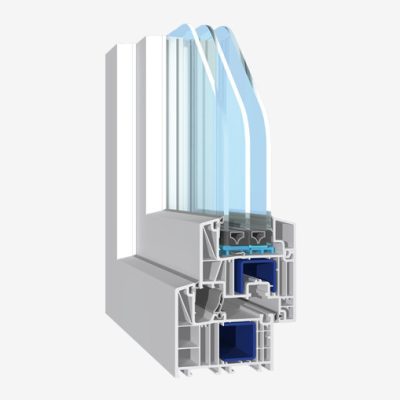Muntins, or imitation muntins, are slats that divide a window into smaller parts. Historically, muntins were a necessary part of window construction. The panes of glass used to be made up of several smaller panes, and the muntins connected them together to reinforce the entire structure. Nowadays, the use of muntins is uneconomical, and the decorative and aesthetic effect is achieved with the use of glazing bars.
When reading texts about muntins or glazing bars, it is easy to get confused about the precise meaning of these terms. Many people think that a glazing bar in a window is the same as a muntin. Even many brand-name window manufacturers do not make the distinction. The Polish Standard PN-EN 12 519:2007 defines the term “mullion” as an element dividing the filling of the frame or sash frame, for example, double glazing, thus the mullion is one of the possible structural elements of the window. However, it does not define the term “transom”. It is generally accepted that the term muntin bars in a window refers to an element that is only an imitation of a muntin bar, which is a structural element of a window. Regardless of the type of material it is made of and the type of muntin bar it imitates, it is only a substitute for a muntin bar, designed to imitate the physical division of the filling without actually dividing it. Therefore, although the muntin and the mullion in the window are not technically identical elements, from an aesthetic point of view they have the same function: to mark the divisions of the fillings of the frames and sashes of the windows.
Muntin bars on windows are usually made of aluminium or plastic composites. There are currently three types of muntin bars available. They differ significantly from one another and are used in wooden, aluminium and PVC windows.
This is the most accurate imitation of classic muntin bars. It was first used in 1984 according to the idea and invention of the Austrian branch of Interpane Glass Industrie GmbH based in Parndorf near Vienna, hence the current name of this solution. The Vienna muntin consists of two independent elements: an inner pane spacer frame and masking elements that are stuck to the outer and inner surfaces of the pane. This solution creates the visual effect of many smaller panes from both a distance and up close. Read also: WHAT ARE THE ADVANTAGES OF PVC WINDOWS? Muntin bars are made of aluminium or plastic and are installed in the space between the panes of glass that make up the insulating glass unit. They create the effect of dividing the pane into smaller parts. Muntin bars can be bent and also joined at different angles, depending on the shape of the window. There is also a wide range of colours available. A mounted muntin bar, also known as an opening muntin bar, is a frame that is attached to the outside or inside of the window with snaps or hinges, or on both sides. The frame of the mounted muntin bar does not adhere directly to the glass, which allows rainwater to flow freely down the surface of the glass. When looking for information on what window muntins are, we may also come across the term structural muntins. However, they are not muntins in the sense given above. This name is used to describe the slats that actually divide the window into several parts. They are a structural element of the window, dividing the panes of glass into smaller panes. Read also: WINDOWS WITH MUNTINS – WHAT YOU SHOULD KNOW?Glazing bars or muntins?
Types of mullions
Vienna muntin bars
Mullion
Inserted muntin bars
Structural muntins
What are muntins? Are they the same as glazing bars?
Polecane produkty

Salamander Bluevolution 73

Salamander Bluevolution 82

